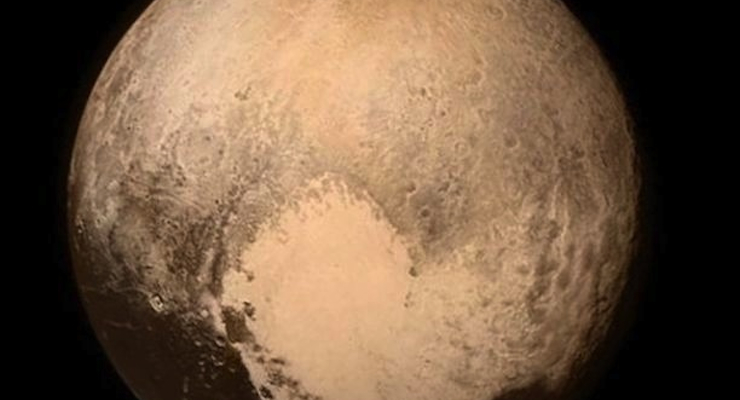

An image of the dwarf planet Pluto as captured by NASA’s New Horizons. (Photo: NASA)
NASA’s New Horizons spacecraft made its historic flyby of Pluto early Tuesday at 7:49 a.m. from more than 3 billion miles from planet Earth. It took more than 9 years for the spacecraft to travel to the now-classified dwarf plant, where it came within 7,750 miles of Pluto’s surface, or roughly the distance between New York and Mumbai.
An image released by NASA — above and below — was taken before the flyby and showed the dwarf planet closer than ever seen before. Celebrations broke out at the Johns Hopkins Applied Physics Laboratory in Laurel, Md., which is managing the mission. NASA officials tweeted out the picture with the message “Hello Pluto.”
Hello #Pluto! We’re at closest approach. Congrats to all! Follow our story & view new images using #PlutoFlyby. pic.twitter.com/8JVlJrcUkY
— NASA New Horizons (@NASANewHorizons) July 14, 2015
“So many people put so much work into this around the country,” said Alan Stern, associate vice president of the Southwest Research Institute and New Horizons principal investigator. “It’s a moment of celebration.”
The image was taken when New Horizons was 476,000 miles from Pluto, depicts a bright feature dubbed the “heart”, which measures around 1,000 miles across.
“The heart borders darker equatorial terrains, and the mottled terrain to its east (right) are complex,” explained the New Horizons team, in a statement. “However, even at this resolution, much of the heart’s interior appears remarkably featureless – possibly a sign of ongoing geologic processes.”
Pluto was officially discovered in 1930 by Clyde Tombaugh using the Lowell Observatory, which was located in Flagstaff, Arizona. In fact, some of Mr. Tombaugh’s ashes are aboard New Horizons, which will offer valuable insight into the solar system’s Kuiper Belt where the earliest evidence of the solar system’s formation is located.
Scientists, however, won’t be absolutely certain of the mission’s success until around 9 p.m. ET Tuesday night, the time officials expect the spacecraft “phones home.” It will be October 2016 before all the data from the New Horizons mission is transmitted back to Earth.
“The exploration of Pluto and its moons by New Horizons represents the capstone event to 50 years of planetary exploration by NASA and the United States,” said NASA Administrator Charles Bolden, in a statement. “The United States is the first nation to reach Pluto, and with this mission has completed the initial survey of our solar system, a remarkable accomplishment that no other nation can match.”
Launched in 2006, New Horizons passed by Jupiter in 2007 on its journey to Pluto. The fastest spacecraft ever, the probe traveled at 30,000 mph.
New Horizons gave NASA scientists a scare earlier this month when it experienced a technical glitch less than two weeks before completing its ambitious mission. An investigation found no hardware or software faults on the spacecraft.







